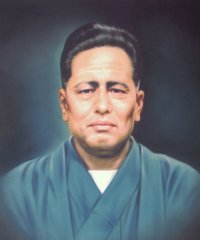

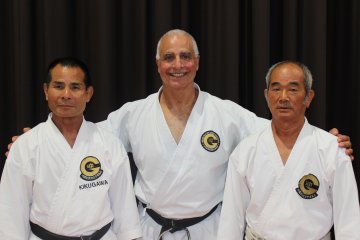
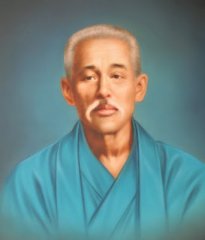
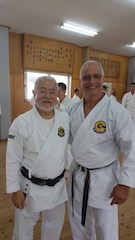
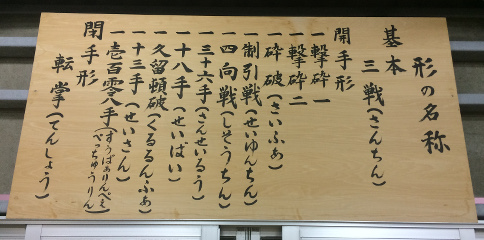
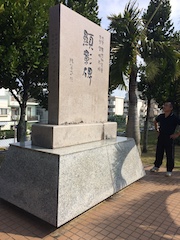
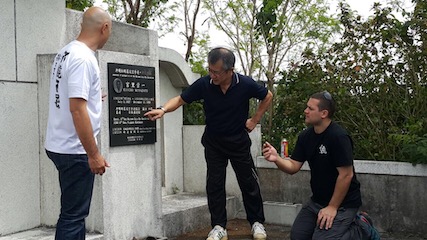
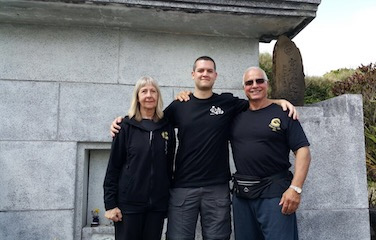
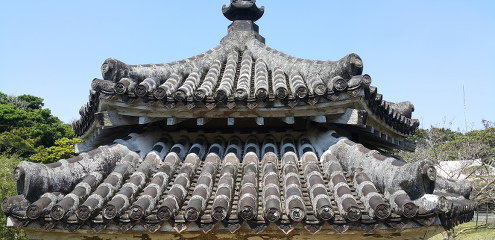
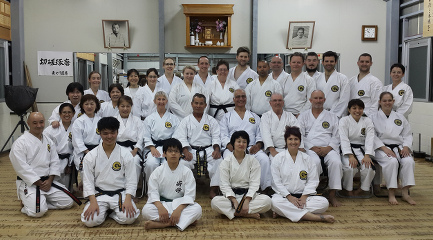

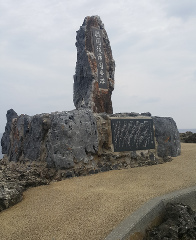


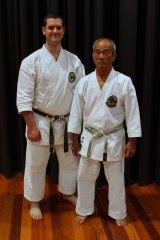
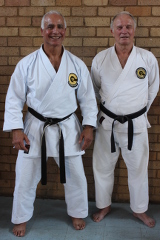
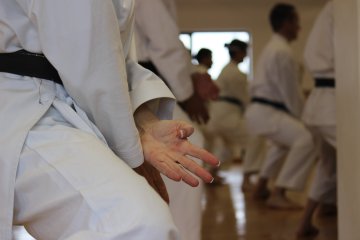




















You Are Here: About » Goju-Ryu Kata » SanseiruSanseru - 36 Hands:  The techniques in this kata seem basic, direct and hard, however there are some unique and advanced, close-in techniques. Joint and knee locks and kicks, low front kicks while moving forward and blocking after turning are techniques that require lots of practice. Slow movements evolve into fast, explosive ones. A feature of this kata is use of koken (top of wrist) at the end of the kata. This last movement (morote koken uke in shiko dachi) is an often misunderstood movement with an array of close-in applications.
Sanseru is unique as Miyagi Sensei studied this Kata under a direct student of Ryu Ru Ko during his studies in Fuzhou, China beginning in 1916. Sanseru, from its numerical designation, would seem to have its roots in Buddhism. This is not to infer that there is a religious connection or implication with this Kata or Karate, but simply that Buddhism was a part of the culture of the people of that time. It should also be noted that numbers had a very important role in the language of the more ancient Chinese before the invention of kanji. Thirty-six representing 6x6, the first six being eye, ear, nose, tongue, body and spirit and the second six, colour, voice, smell, taste, touch and justice. The kata teaches complex punching combinations, employs many entry, joint attacks and defences against kicking attacks. A more realistic explanation of this and the other numerically named Kata is that they refer to a systematic method and understanding of certain groupings of vital acupressure points. It is this science that the martial arts was based upon and developed. Feng Yiquan, who lived during the Ming Dynasty (1522-1567) developed this particular method of using variations of "36" forbidden points to defeat his opponents. Other disciples of Feng created other quans expanding the number to 72 and ultimately 108. Sanseru is found in the following styles of Chinese Boxing: Crane, Tiger, and Dog
|